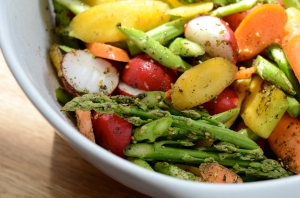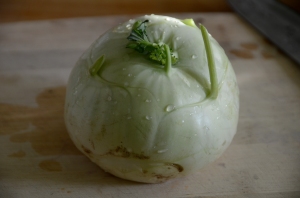Growing up, I was never a picky eater. I ate almost everything, from cow’s milk from 6 month old with no allergy whatsoever, (I still wonder what mum was thinking when she decided to give a baby cow’s milk?!) to fish, kimchi from an early age, and blood soup, according to my aunt. I still have no idea what the soup is, but she claims when I was 3, she saw me eating a small bowl of a pork soup with coagulated blood floating on top, without blinking twice. I definitely wouldn’t eat it now, though. Another story goes, when I was about 2-3, our family went to a restaurant, where a big aquarium with exotic tropical fish was at the entrance. Most kids would have stared at the aquarium and probably admired the beautiful fish, but I saw them as source of food, and said “Mmm, Yummy! I want to eat them all!”. What a weirdo.
There were few things I didn’t like when I was little, most of them I still don’t like to this day. I thought soy milk was the most disgusting thing ever, I almost puked the first time I tried it. My old flatmate from a few years ago, told me vanilla-flavored soy milk didn’t taste too much like soy milk, but I still found it disgusting. I also despised carrots, raw, or cooked. It took me a very long time to like carrots. I was a teenager when I decided I like carrots when they are cooked, or should they be served raw, they must be grated or julienned. Don’t ask me why. But I still find raw carrot sticks repulsive. My friends laugh at this, of course. I can’t tell you why it’s ok for me to eat grated carrots and not the stick. It could be the aroma, or the texture? Who knows.
The carrot, being one of three components of mirepoix, (the other ones being celery and onion), is sometimes overlooked. I always have one or two laying around in the kitchen, in case I spontaneously want to make a soup or stew, and although when you have sweated the finely chopped carrot in oil for 20 mins with onion and celery, you won’t be able to taste it, but you will notice a difference to a soup when the carrot is missing. Carrots are usually cheap and plentiful almost anywhere you live. They come in beautiful rays of shades, like purple, white, yellow, pink, and orange. They can be paired with many different spices and herbs, and when roasted, the natural sweetness intensifies, especially when they are glazed like in this new recipe. I would have never guessed as a 9 year old that I would ever make a dish where the carrot is the star on a plate. It’s a simple recipe to make for a weeknight dinner. I can also imagine it would be great as an accompaniment to turkey or chicken. Enjoy! xo-A.
Pomegranate Molasses and Harissa Glazed Carrots with Cashew-Ginger Cream
Note: Pomegranate molasses and Harissa can be purchased at turkish/arab supermarkets. Make sure the molasses has as little ingredients as possible. Most of them contain a lot of additives and such.
Serves 2 as an appetizer or a side dish
1 bunch thin-ish carrots (about 8-9), left whole, but halved if they are too thick
For the glaze,
1.5 tsp honey
1.5 tsp pomegranate molasses
1-2 tsp harissa (store-bought is fine)
2 Tbsp olive oil
1.25-1.5 tsp salt
1 tsp coriander seeds, lightly crushed
1/2 tsp caraway seeds
Freshly ground black pepper
1 large clove garlic, grated to a pulp
For the cashew-ginger cream,
60g cashew nuts
40ml water or vegetable stock
A good squeeze of lemon juice
1/2 tsp ground ginger
To serve: A few coriander leaves and/or mint leaves, and a good pinch of roughly crushed pink peppercorns.
1. Preheat the oven to 160 degrees celsius.
2. In a small saucepan, heat the honey over low heat until they become very runny. Add all the ingredients for the glaze and whisk well. Line a baking sheet with a parchment paper. Lay the carrots on the sheet, brush all over with the glaze until they are well covered. Roast for about 45 mins until the carrots are tender. Toss them gently once or twice for even cooking.
3. For the cashew cream, cover the nuts with boiling water and set aside for about 30 mins. This process will soften the nuts. Drain and rinse quickly with fresh water.
4. In a food processor, add the cashews and the rest of the ingredients. Blend until smooth. Add a bit more water or stock if the cream is too thick.
5. Serve the glazed carrots, sprinkled with coriander leaves and/or mint, and a good dollop of the cashew-ginger cream on the side.



















